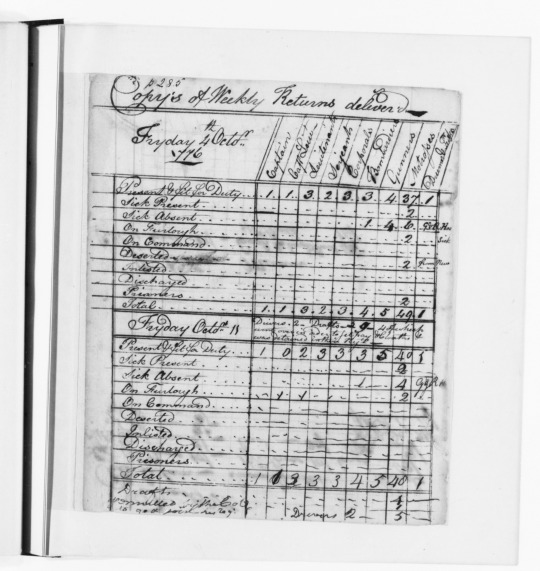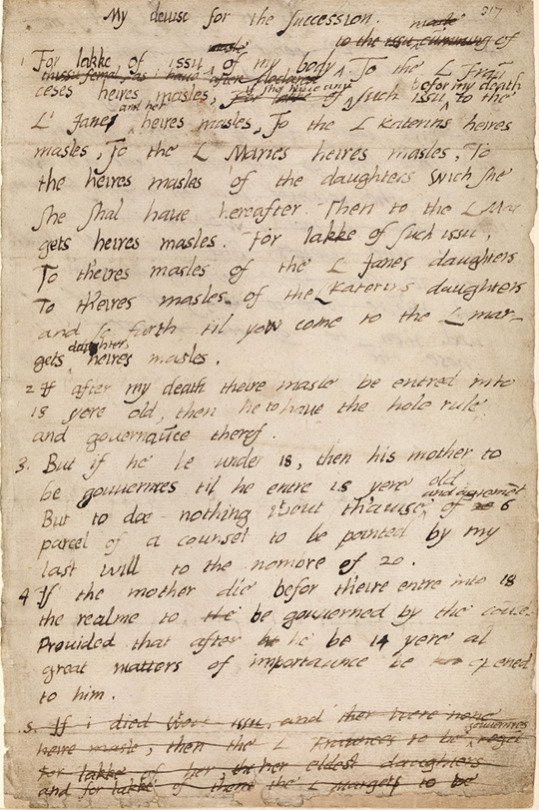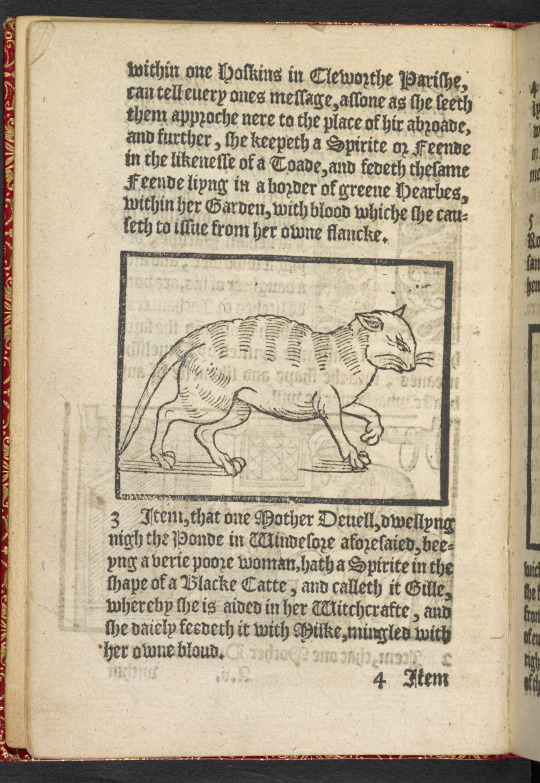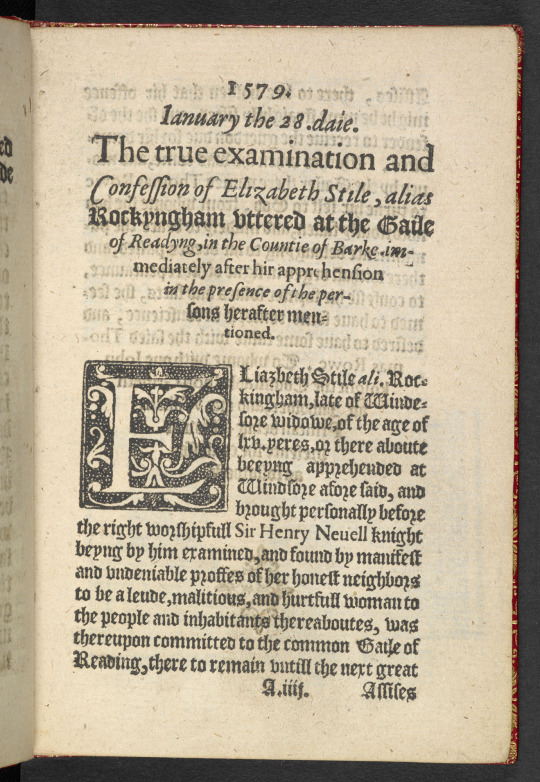#historical documents
Text

from quendergeer on x.com
The USA did nothing to help the Warsaw Ghetto. As they ignored the Warsaw Ghetto, the CIA were recruiting Nazi spies to gather intelligence on the Soviets.
The United States did not get involved in the genocide of Jews in Europe until their power was threatened. So ask yourself now, is the United States funded State of Israel is truly about protecting Jewish people?
#jewish history#jewish radical activism#jewish antizionists#poland#united states#historical documents#sources
460 notes
·
View notes
Text
As shared by Rabbi Danya Ruttenberg in her newsletter.
32 notes
·
View notes
Text
Tumblr, help! In drafting a post centering on Hamilton’s artillery company, I’m having to look at some of Alexander Hamilton’s pay book for the company [x], and I’ve noticed this (the below images) within one of the weekly return tables Hamilton wrote. However, I’ve only been able to decipher some of this note. This section of the book (images 182-185) is not included in The Papers of Alexander Hamilton for whatever reason, only the middle section with his notes on Plutarch and Postlethwayt.

Here’s the full page, and below a close up of the note at the header of the October 11th table. Also interesting to note are the “Prisoners” rows but that’s besides the point.

Source: Image 184 of the Alexander Hamilton Papers: Miscellany, 1711-1820; Military papers; By period; American Revolution, 1775-1783, Library of Congress. [link here].
Here’s what I’ve managed to read:
Drivers. 2 - Drafts 29 4 [Something starting in A] went over in Dec to see how [something] was detained in this reg't
If anyone has any ideas, please feel free to tackle this for yourselves!
#grace’s random ramble#amrev#need help#alexander hamilton#historical alexander hamilton#captain hamilton#historical documents#library of congress#handwriting#historical handwriting#the american revolution#american revolutionary war#amrev fandom#hamilton letters#historical hamilton#american history
30 notes
·
View notes
Note
(Context: I'm a special collections cataloger) Found a family Bible today! Complete with marriage info and birth info for all the kids. Reminded me of the book Christopher re-covers in Nameless.






This is so cool, I love it! And yeah, that's the kind of book I was thinking of when I wrote about Christopher re-covering a family Bible, for sure. (Also thanks for your patience, you sent this a while ago and I just now got round to posting -- for readers, I did get permission to post this publicly.)
I especially love the writing around the margins in the fourth photo. Definitely going to be perusing these interestedly for a while!
[ID: Six images of a book, either Book of Common Prayer or a combination Book and Bible; the first four images show the frontispiece, flyleaf front and back, and list of contents, across which have been written a number of names with details of children and such. The first image dates the ownership of the book initially to 1849. The last two images show text of the book with bookmarks, one of which depicts the Madonna on a lace background with a sprig of foliage, the other of which shows a bouquet of flowers.]
64 notes
·
View notes
Text
I was doing some reading for tomorrow's (🤞🏻) article, but this was so cool I had to share it.
For the 300th time, I am lamenting how we did not really get to see Abigail's work or expertise in BoS.
#national treasure#national archives#historical documents#conservation#they have just a ballin aesthetic going on there btw
16 notes
·
View notes
Photo


TUDOR WEEK 2022
DAY 4 FAVORITE TUDOR RELATED RELIC → (2 OF 2) EDWARD VI’S DEVISE FOR THE SUCCESSION.
When King Edward VI fell seriously ill in 1553, he and his councilors began to put the kingdom’s affairs in order. The priority was the succession as he did not have any children himself and his heirs at the time were his half-sisters Mary and Elizabeth. Mary was the primary heir, but she was devoutly Catholic. Strongly opposed to having England fall into Catholic hands, Edward drew up the “Devise” changing the succession from his half sisters to the children and grandchildren of Mary Tudor (Henry VIII’s younger sister) and Charles Brandon. Once this change was put in place, the primary heir was Lady Jane Grey, Edward’s first cousin once removed (granddaughter of Mary Tudor, grandniece to Henry VIII). This fulfilled the religion issue, as Lady Jane Grey was passionate about the Protestant religion. Lady Jane Grey did succeed to throne, but was deposed by Edward’s sister, Mary, nine days later.
Portrait: Edward VI by William Scrots
Devise Image: Inner Temple Library
#tudorweek2022#dailytudors#edward vi#devise for the succession#tudoredit#tudorerasource#artedit#portrait#16th century#early modern history#early modern english history#tudor history#historical letter#historical documents#henry viii#lady jane grey#history#historyedit#mary I#elizabeth I
160 notes
·
View notes
Text

Map of Carolina and the Western Sea, 1709, from the Division of Rare and Manuscript Collections, Cornell University Library
#map#1700s#18th century#north america#aesthetic#dark academia#light academia#history#historical documents#north carolina#south carolina#the americas#art#colonialism#cornell university
17 notes
·
View notes
Text
Ann Bonny and Mary Read.
Below is a screenshot of a portion of the actual trial record for Ann* Bonny and Mary Read, the two most famous female pirates in history. This is the most detailed eyewitness description of them known to survive to the present day.

Image: Screenshot of an excerpt from the trial record of pirates Ann Bonny and Mary Read.
Here is the text with some edits on my part to update anachronistic spelling and grammar, for those who don't want to try to parse early 18th century court documents:
"Dorothy Thomas deposed, that she, being in a canoa at sea, with some stock and provisions, at the North-side of Jamaica, was taken by a sloop, commanded by one Captain Rackam (as she afterwards heard;) who took out of the canoe, most of the things that were in her: and further said, that the two women, prisoners at the bar, were then on board the said sloop, and wore mens jackets, and long trousers, and handkerchiefs tied about their heads; and that each of them had a machet and pistol in their hands, and cursed and swore at the men, to murder the deponent; and that they should kill her, to prevent her coming against them; and the deponent further said, that the reason of her knowing and believing them to be women then was, by the largeness of their breasts."
Source: https://www.postandcourier.com/the-tryals-of-captain-john-rackam-and-other-pirates/pdf_68970990-ded9-11e8-be44-1b1f2868c03d.html
*And yes, its often spelled "Ann" with no e in contemporary documents- the e appears to have been an error in the trial record which stuck. Ann also seems to have used aliases, and is sometimes referred to in contemporary sources by the last name Bonn or Fulford, or the first name Sarah, leaving some ambiguity as to her real name.
#Ann Bonny#Anne Bonny#Mary Read#Pirates#Piracy#John Rackham#Jack Rackham#John Rackam#Calico Jack#Historical documents#Primary sources#Women Pirates
6 notes
·
View notes
Text
La Fayette's taste in Books
I am always on the hunt for some primary historical documents that give a deeper insight into La Fayette’s private life and I found this invoice for a couple of books that he bought between mid-1829 and early 1830.

Daniels, Mary F. “The Lafayette Collection at Cornell.” The Quarterly Journal of the Library of Congress, vol. 29, no. 2, 1972, pp. 95–137. JSTOR, http://www.jstor.org/stable/29781504. Accessed 14 Feb. 2023.

A few titles are especially noteworthy. First, there is one book called “Mem[oirs] of Clinton” That are very likely the Memoirs of DeWitt Clinton, the former Governor of New York who had died in 1828 and whose Memoirs were published in 1829.

Than we have one book by Madame de Staël, a dear and long-time friend of La Fayette. Funny enough, de Staël was the daughter of Jacques Necker, former French minister of finances, and while La Fayette and de Staël had a very close relationship ... La Fayette and Necker’s relationship was less harmoniously.
We also see a book by Destutt de Tracy. He was not only a friend and colleague of La Fayette, no, the two were also in-laws. La Fayette’s son Georges had previously married de Tracy’s daughter.
The most interesting book on that list is probably “Lafayette en amérique.” The book was written by Auguste Levasseur, La Fayette’s secretary during his last visit to America in 1824/25, and published in 1829.
This list shows us La Fayette’s taste in books. The titles cover a wide range of subjects, some even with a personal connection. The books are written in both English and French (this list contains no Latin titles, but La Fayette read them as well.)
#marquis de lafayette#la fayette#dewitt clinton#madame de staël#destutt de tracy#auguste levasseur#georges de la fayette#books#1829#1828#handwriting#historical documents#tour of 1824 1825#1824#1825
24 notes
·
View notes
Text

I *love* this document, featuring travel times from London to places all across the globe by the clearest route of travel.
33 notes
·
View notes
Link
This is the gospel book that was carried in procession at the coronation of Charles III. Special Collections Library Twitter has been, well, atwitter.




55 notes
·
View notes
Text

… The [Law] Register [of Alexander Hamilton, 1795-1804] is the first document of its kind made available in printed form and copiously annotated. Some readers will use the Register for information on a particular case or cases or for bibliographical aid in exploring court records. Apart from such use the document in its totality uniquely illuminates the practice of law during a formative period in legal development and growth of the bar in the State of New York.
Source: Hamilton, Alexander. The Law Practice of Alexander Hamilton, Documents and Commentary: Vol. V Ed. Goebel, Julius Jr., Smith, Joseph H. Columbia University Press, 1981 pg. 8 [Link Here]
And one reader will use the Register to outline part of a historical fiction epic. Definitely the unconventional answer.
#grace’s random rambles#alexander hamilton#historical alexander hamilton#the law practice of alexander hamilton#legal history#new york legal history#the american icarus#TAI#historical fiction#writers on tumblr#american history#writing community#historical research#historical documents
7 notes
·
View notes
Text
There is something deeply meaningful to me to find historical documents from hundreds of years ago, and finding its contents moving. Like, reading the words of a man written 500 years before I got to read them, and seeing his grief, being so moved to grieve with him.
#im literally crying yes#for this man. who died broken and at peace with himself#history#historical documents#cabeza de vaca
2 notes
·
View notes
Text
youtube
A wonderful content about the Universal Declaration of Human Rights. If you enjoyed watching the content, consider subscribing to my YouTube channel and hitting the like button on YouTube
#human rights#social justice#justice#equality#united nations#dignity#freedom#historical documents#history#Youtube
5 notes
·
View notes
Text







Tudor Week 2022 Day 4: Favorite Tudor Relic: 1579 Witchcraft Pamphlet: A Rehearsal Both Strange and True.
The pamphlet tells the story of Elizabeth Stile, a woman who was accused of witchcraft in Tudor times. This pamphlet is held in the British Library and here is what the site says about it: “This item is an English witchcraft pamphlet from 1579. After a preface to the reader condemning the practice of witchcraft and advising the avoidance and prosecution of witches, the pamphlet gives an account of the doings of Elizabeth Stile – a 65-year-old Windsor woman accused of witchcraft – and three other women (Mothers Dutten, Deuell and Margaret), based on Stile’s confession in jail. The acts of witchcraft described include the women keeping spirits or fiends in the likenesses of animals (toads, cats, rats) that acted as servants and companions. These animals – known as familiars – were fed on the witches’ own blood. The acts also include many counts of maleficium, i.e. the acts of harm caused by witchcraft. These maleficia include murders committed by piercing images of the victims at the location of their hearts, making victims sick through incantation and setting their animal familiars against them. The text also describes a man, Father Rosimonde, who is claimed to shape-shift.” Witch trials were not super prevalent in Tudor times, but there were a few cases of them throughout the reign of Elizabeth I. Henry VIII enacted the first witchcraft laws in 1542 which, (according the the Salem Witch Museum in Salem, MA) were repealed at a later date, then reinstated in 1563.
*Note: I know this isn’t a typical Tudor relic, like say a royal coin or tapestry, but I just love reading about the English and North American witch trials and I find the idea of “Tudor witches” to be so fascinating. So I hope this still counts for Tudor week lol.*
#tudorweek2022#tudor week 2022#the tudors#the tudor era#tudor era#the tudor period#tudor period#the tudor dynasty#tudor dynasty#tudor history#english history#witch trials#history#pamphlet#historical documents#elizabethan#elizabethan england#elizabethan era#woodcut#woodcuts#art#art history#tudor#tudors#16th century#sixteenth century#renaissance history#malleus maleficarum#witches#dailytudors
43 notes
·
View notes
Text

The earliest known reference to the modern rules of how the Queen (♛) and Bishop (♝) move in the game of chess comes from the love poem Scachs d'amor, written in the year 1475 in Catalan-Valencian language by Francesc de Castellví, Bernat Fenollar, and Narcís Vinyoles.
The poem uses a chess match as an allegory for love. The poem's structure is also based on chess: it has 64 stanzas, just like a chessboard has 64 squares, and the stanzas are grouped to represent the movements of the chess pieces.
(Thank you @pomme-poire-peche for the information!)
#escacs#literatura#història#esports#chess#history#chess history#medieval#1400s#poetry#historical documents#país valencià#chesslove#chesslife
24 notes
·
View notes